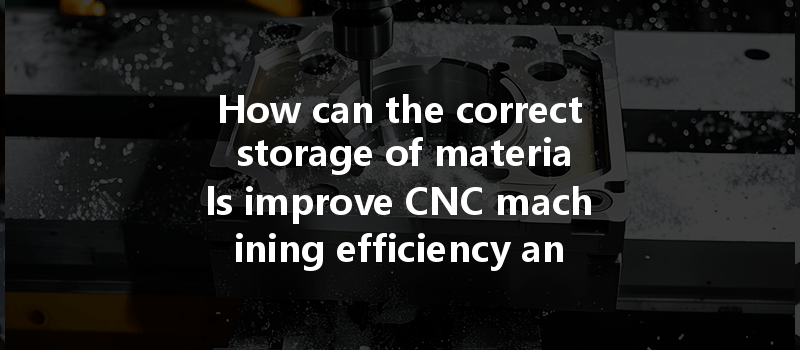Opening: The Importance of Material Storage
Did you know that up to 25% of machining defects in the industry can be traced back to improper material storage? This startling statistic highlights an often-overlooked aspect of machining: the meticulous care of raw materials before they even enter the CNC machine. With advancements in technology, CNC machining offers precision and efficiency, but the journey begins long before the first cut is made. Understanding the importance of material storage can not only enhance machining efficiency but also significantly improve the final product quality.
Understanding CNC Machining
CNC (Computer Numerical Control) machining is a manufacturing process that utilizes computerized controls to operate machine tools. The machines can be used to cut, shape, or fabricate different materials. However, the performance of CNC machining is heavily influenced by the quality of the materials being used. Therefore, understanding how to store materials properly becomes essential.
The Importance of Material Quality
Key Factors for Material Storage
To enhance CNC machining efficiency and quality, it’s vital to focus on the following storage methods and conditions:
Optimal Conditions: Many materials are sensitive to temperature fluctuations. Metals, plastics, and composites can suffer from thermal expansion or contraction. Store materials in a climate-controlled environment to maintain their integrity.
Avoiding Heat Sources: Position materials away from direct sunlight, heaters, or any heat-generating equipment. Heat can change the characteristics of metals, leading to warping or softening, which drastically affects machining.
Moisture Control: High humidity levels can lead to corrosion in metals, while low humidity can affect plastic materials. Implementing a dehumidifier in your storage area can prevent moisture-related issues and maintain the quality of your materials.
Sealed Storage Options: For particularly sensitive materials, consider using sealed containers or vacuum bags to keep moisture out.
Dust Control: Dust can accumulate on materials and cause contamination. Keep storage areas clean, and regularly clean the materials before machining.

Separation of Materials: Store different materials separately to prevent cross-contamination, especially when dealing with metals and plastics.
Weight Distribution: Use appropriate racking systems that can evenly distribute the weight of stored materials. This practice prevents warping and deformation.
Vertical and Horizontal Storage: Depending on the materials, vertical stacking might save space and prevent bending, while horizontal may be better for larger sheets or blocks.
Inventory Systems: Maintain an inventory management system to track what materials you have on hand, their storage conditions, and their expiration dates if applicable.
Labeling: Clearly label materials with information regarding their type, specifications, and the date of storage to ensure timely usage and proper tracking.
Effective Solutions for Implementing Material Storage Practices
Implementing the above storage methods involves consideration of both technology and personnel training. Here are some actionable steps:
: The Path to Enhanced CNC Machining
Proper material storage is crucial for optimizing CNC machining efficiency and ensuring quality output. By maintaining control over the environment, managing humidity, preventing contamination, and ensuring proper handling methods, manufacturers can significantly improve the quality of their machining processes.
Understanding the impact of material storage is essential for anyone involved in CNC machining or manufacturing. It’s not just about the machines or the tools; excellent outcomes stem from the very materials used. Prioritizing effective storage systems should be part of every organization’s strategy to improve quality and efficiency in CNC machining. In an industry where precision and quality are critical, recognizing and implementing sound storage practices can lead to substantial long-term benefits.
Remember, effective material management can serve as the backbone of your production process—impacting not just the efficiency of your machining operations but also the satisfaction of your clients and the overall success of your business. Let’s ensure that the journey of your materials from storage to machining is as smooth and efficient as possible.






